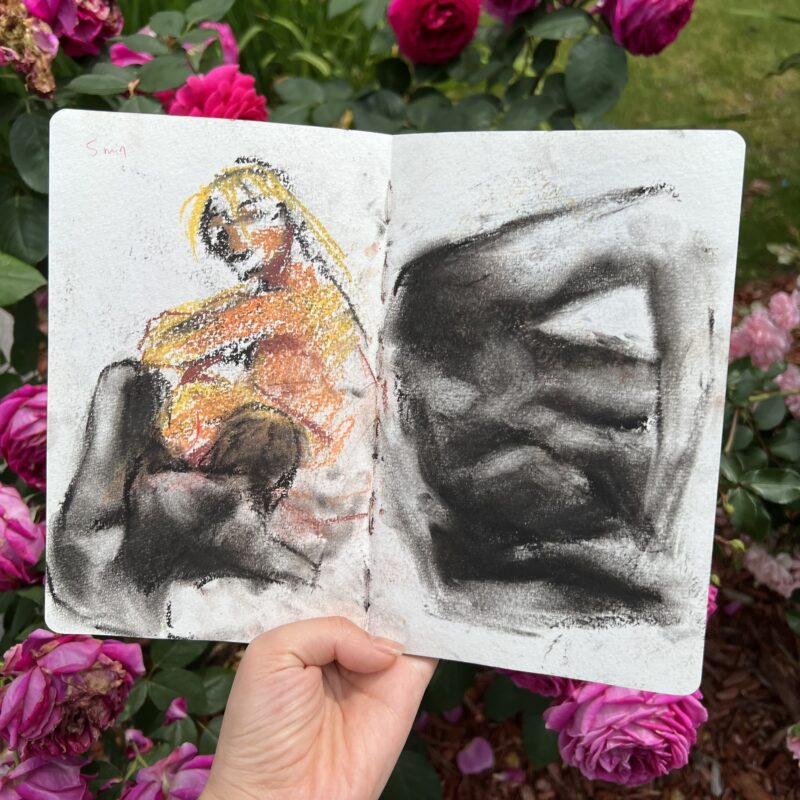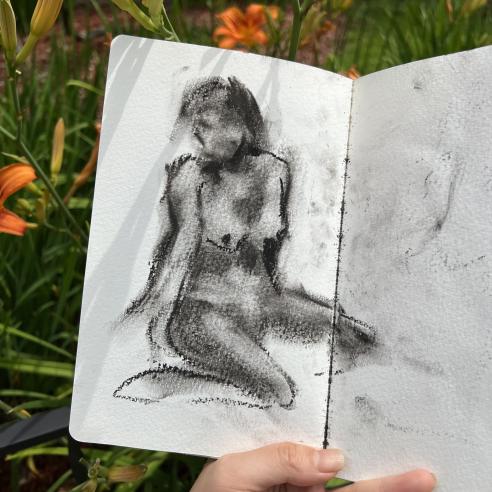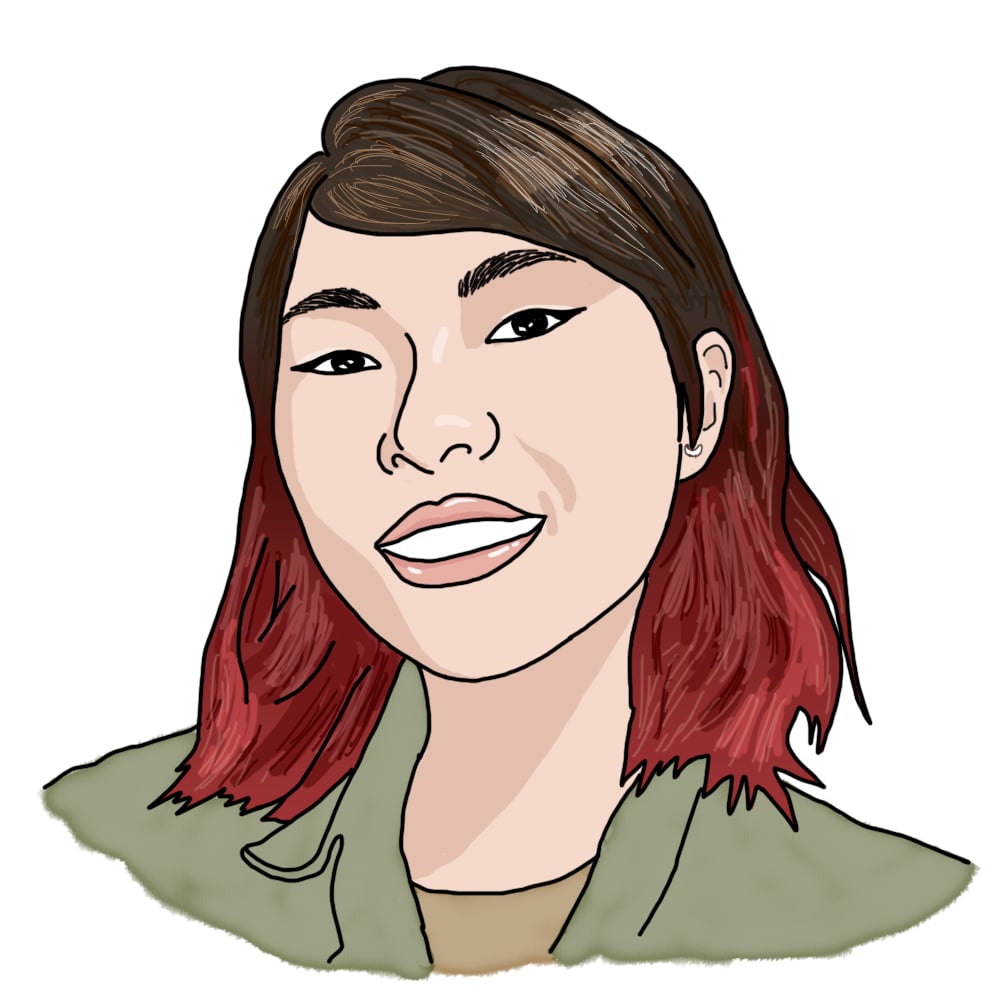
Drawing from Life by Audrey C. '24
"is that the boldest stroke you can make?"
I found one of my old sketchbooks the other day. I’m ashamed that this “old” sketchbook, which I had started in 2019 (that’s four years ago!!), is also my most recent sketchbook because I’ve hardly drawn for myself since starting college. I’ve made a ton of art for my clubs at MIT and for Admissions, but when was the last time I sat down and let myself draw or paint without expectations?
My high school friend Deelia is an art and human factors01 my understanding is that this program covers user centric design from both artistic and engineering lenses major at Tufts and invites me to a life drawing session the other day in a Cambridge based studio called Gallery 263. I’ve been to one structured life drawing session before,02 if you don't count creepily drawing classmates during boring high school classes or strangers at a cafe a year ago in NYC at an “underground” cafe, which was sadly the last time I’ve drawn in this sketchbook. During life drawing sessions, a (usually) nude model poses in the middle of a room in a series of timed poses for a circle of artists to sketch. Life drawing is essential to a traditional art education, for many good reasons that I’ve come to realize during the session. I often think about what my life would be like if I went to an art college. She’d probably be just as tired and her posture just as bad. But attending this life drawing session with Deelia feels like momentarily crossing paths with this parallel universe self, one who dirties herself with charcoal dust instead of machine grease.
1 minute poses
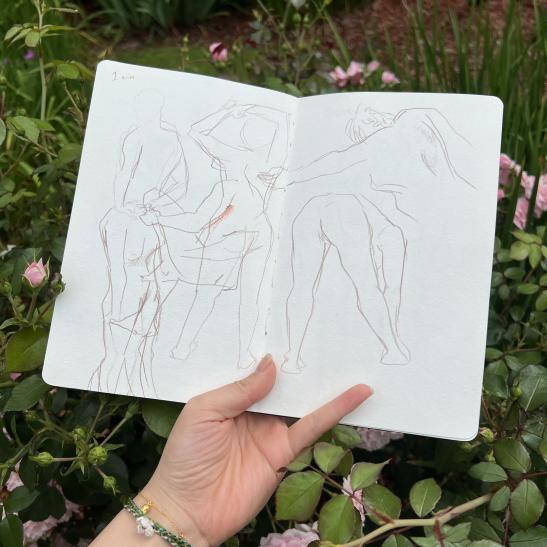
The session hits the ground running with 1 minute poses. Every mark I leave on the paper, I make with intention because I only have time for so many. Humans are a living, breathing sack of flesh with so many different planes and contours. It’s fun to choose which ones to emphasize with such a limited set of lines.
Learning how to distill the complicated human form into marks on a paper is why most models are nude and why these sessions are done live! Drawing from a photographic reference removes the process of translating a 3D form into 2D, while live drawing makes you do just that. Of course, I’m acutely aware that model is real person whose body is being scrutinized from every angle, and I try my best to approach the session with respect and sensitivity.
As the poses fly by, my markmaking feels increasingly fluid — “looseness” is the dynamic, expressive quality that many strive for in their sketches. My high school art teacher’s biggest piece of feedback for me was to loosen up, and I’ve never quite understand what that means until recently. Upon peeking at other artists’ sketches, the ones that stand out to me don’t necessarily copy the model’s exact form, but rather take artistic liberty to exaggerate certain contours. By protruding an arm or pushing out a hip, they create fluid motion in an otherwise static drawing.
2 minute poses

The two minute poses feel similar to the one minute poses, except now I have a bit of extra time to add just a smudge of shading. It’s feeling looser, but it’s not exactly where I want it to be. I peek at Deelia’s sketchbook and notice how much depth and motion she’s able to get in such little time with charcoal.
5 minute poses
So for the 5 minute poses, I try charcoal for the first time. Deelia explains to me that using charcoal is one of the first things they teach you to use at a college art program. Because charcoal is a blunt stick, as opposed to a pencil sharpened to a fine point, it’s difficult to control. And when something is hard to control, you simply don’t. Instead of trying to capture outlines and details, you use charcoal to capture the broad shapes of light and shadow.
I find a process that seems to work for me: first I rub charcoal in a vaguely human shaped blob and smudge it out with my finger. With a kneaded eraser, I remove patches of charcoal to carve out areas of highlight. Then I go back in with the charcoal to deepen shadows, rub away highlights with the eraser, and repeat this process of give and take until the five minutes are up.
I’m really proud of the sketch of the model’s back! I did my first strict pullup last year and shaping the subtle contours of the model’s back reminds me of all the exercises I did to build up my upper back strength.
10 minute poses
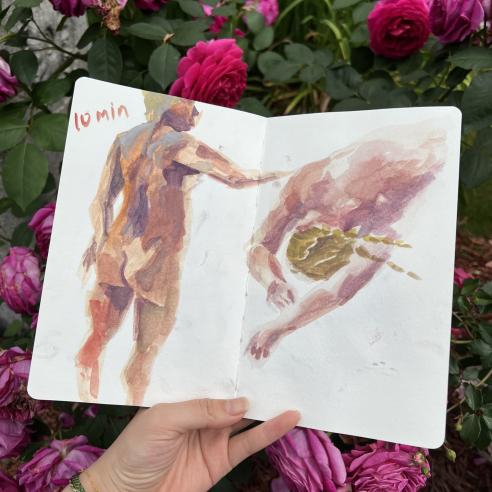
For the the 10 minute poses, I switch to a gouache palette that I brought with me. It’s such a shame that I’ve hardly touched it since high school, but gouache is my absolute favorite medium. Gouache is commonly described as, if acrylic and watercolor had a finicky child. It’s opaque like acrylic, but water soluble like watercolor so you can reactivate dried layers of paint. As a result you can sort of layer gouache, but light colors tend to dry darker and dark colors tend to dry lighter. You can see this effect on the grayish patch on the model’s shoulder on the left. I add light blue, almost white paint to that section in attempt to capture a highlight, but it mixes with the existing brown underlayer to create that unsavory gray.
But I love gouache with all my heart for it’s ability make bold strokes. In the movie The Half of It03 literally my favorite movie , painting a bold stroke is a metaphor for living life and loving boldly:
“I had a painting teacher once tell me that the difference between a good painting and a great painting is typically five strokes. And they’re usually the five boldest strokes in the painting. The question, of course, is which five strokes?”
~ Aster to Ellie
I’m not necessarily striving for a “great” painting here. I just want to have fun with art again. But it’s a good reminder to paint fearlessly. Even if humans aren’t exactly purple, purple is great for creating bold shadows in human skin. I apply cool purples liberally to create contrast against the warm yellows, reds, and browns that color living flesh.
20 minute pose
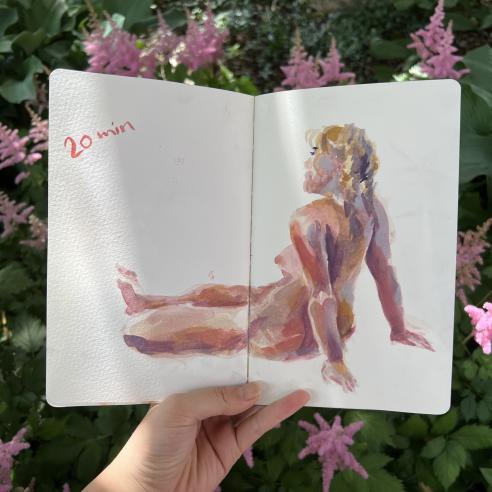
The 20 minute pose feels like eternity. I take my sweet time to carefully build up layers of color. I avoid muddying up the areas where the studio lights directly hit the model, like the face and left shoulder. But I notice that the muddied area in my 10 minute painting would look great in areas softly illuminated by reflected backlighting. So I add the blue-white paint to the model’s back and right shoulder to represent that softer backlighting. I’m happy with that choice!
“Love is being willing to ruin your good painting for the chance at a great one.”
~ Ellie to Aster
Even if a bold stroke doesn’t work out in one painting, it can still work in another.
I’ve been drawing for most of my life. I have the privilege of having taken studio art classes in elementary and middle school, which have been instrumental in teaching me the foundations of observation, sketching, and color. In high school, I had the opportunity to give back and teach younger kids at the same art studio, which has given me a lot of time to think about explaining something as subjective as art in definite terms. Even though I’ve been art-ing for a while, art is a lifelong learning process. I’ve learned so much in the two hour long life drawing session just by carefully observing both the model and sketches from the people around me. That’s another benefit of life drawing sessions: getting to observe and be inspired by other people’s processes.
Art brings back the joy that I’ve sometimes lost sight of when work piles up and I get hosed. I know how to make bold strokes; I just need to pick up my sketchbook more.
- my understanding is that this program covers user centric design from both artistic and engineering lenses back to text ↑
- if you don't count creepily drawing classmates during boring high school classes or strangers at a cafe back to text ↑
- literally my favorite movie back to text ↑
